The Capital of Kink is, unsurprisingly, one of the most LGBTQ+-friendly capital cities in Europe—and certainly the edgiest. Berlin is counterculture to its core and serves as a haven for artists and independent thinkers. Evidence of this is everywhere, from its distinctive street art and gritty neighborhoods—still bearing remnants of the East German GDR era—to hip and trendy districts like Kreuzberg and Schöneberg. So, whether you're exploring vast museums or raving in warehouse basements, the Berlin experience never fails to leave an impression… or trigger an existential crisis.
Don’t be fooled by the seemingly grumpy—and occasionally outright rude—locals, though; everyone is welcome in Berlin. The “cool and aloof” attitude of many Berliners is simply part of the city’s edgy charm—take it as an amusing feature, not to be taken personally. Berlin is a truly international metropolis, arguably rivaled only by London in terms of its diverse foreign population. To be LGBTQ+ in Berlin is to hit the jackpot: the gay scene is massive, the fetish scene is thriving (and probably writhing), and every rave is incredibly gay-friendly—to the point that there seems to be more queer people than straight down in those basements. That is, of course, assuming you can make it past the city’s infamously selective club bouncers!
Clubbing, however, isn’t mandatory, as Berlin also has plenty of cultural activities to keep any LGBTQ+ tourist occupied. Be you a creature of the day or the night, Germany's capital knows how to keep its visitors entertained and, love or loath it, is a rite of passage location for all LGBTQ+ travelers to Europe.
You can download the Gay Berlin guide for free. Just provide your email address and we’ll email you a PDF.
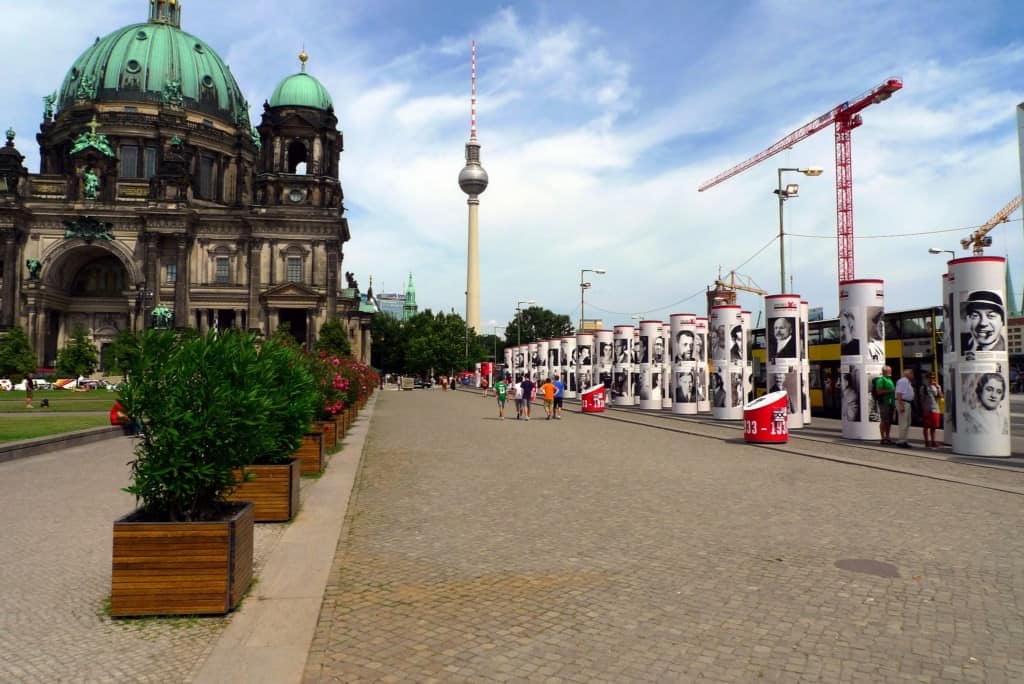
Table of Contents
1. General Tips
2. Transportation & Airport Transfer
3. Gay Hotels in Berlin
4. Sightseeing & Activities in Berlin
5. Berlin Gay Tours
6. Restaurants and Cafes
7. Berlin Gay Bars and Clubs
8. Berlin Gay Sauna's & Cruising Bars
9. Gay Events in Berlin
10. Day Trips from Berlin
General Tips
Berlin’s weather isn’t the best in Europe for sure, and it can rival London in that aspect too. The best time to visit Berlin is from May to September. During these months, temperatures range from 60°F to 75°F (15°C to 24°C), perfect for exploring the city’s parks and enjoying the outdoor cafes. However, this is also peak tourist season. Spring (April and May) and early fall (September) offer milder weather, fewer crowds, and lower accommodation prices. Winter (November to February) is cold, with temperatures often dropping to 30°F (-1°C), but if you don’t mind the chill, its festive Christmas markets are some of the best in Europe.
Schöneberg is one of Berlin’s most famous gay districts and has been a hub for LGBTQ+ life since the 1920s with a vast range of gay bars, clubs, and cafes. Another hotspot is Kreuzberg, known for its more alternative and distinctly queer scene. Berlin’s nightlife is legendary, with iconic clubs like Berghain and KitKatClub being extremely gay-friendly and known for their hedonistic atmospheres. Just be aware that their popularity has soared, and you could end up queuing for hours and still be turned away. Research the least busy times to go (Sunday morning is often a good bet) and familiarize yourself with the door policies, although entrance may depend on the bouncer’s highly subjective judgment. Have a back-up plan, especially for Berghain or KitKatClub.
The city also hosts many LGBTQ+ events, including the annual Christopher Street Day (Berlin Pride), one of the largest pride parades in Europe, and the Folsom Europe festival, which is one of the biggest fetish events in Europe and practically a rite of passage for kinky folk. All are good times to visit the city and see it flourish.
Should you be considering moving to Berlin—and who would blame you—it's worth seeking out the advice of specialists in immigration law. German efficiency isn't understated, and they really do like their paperwork, so it's wise to seek legal assistance for visa application procedures and for obtaining a residence permit in Germany.
Transportation & Airport Transfer
Berlin has an incredibly developed public transport system, including subways, commuter trains, trams, buses, and bike share. Berlin is extremely bike-friendly, with many dedicated lanes, and locals use their bikes in all weather conditions, from rain and snow to heat and sunshine. The transport system may seem overwhelming for first-time visitors. The subway is called the “U-Bahn,” while the aboveground commuter train is known as the “S-Bahn.” Berlin operates on a zone system, starting with Zone A in the center, and Zones B and C moving toward the outskirts. Tickets are valid on all trains and buses and must be validated at the machine before boarding. The most economical option is to purchase an unlimited, multi-day ticket, or a 4-ride ticket, which offers a discount compared to single rides.
Berlin is now served by one main airport, Berlin Brandenburg Airport (BER). Located in Zone C, it is connected to the city center by the S-Bahn and regional trains, which can be reached with a Zone ABC ticket. The airport has its own train station directly linked to the terminal, making transport convenient for travelers.
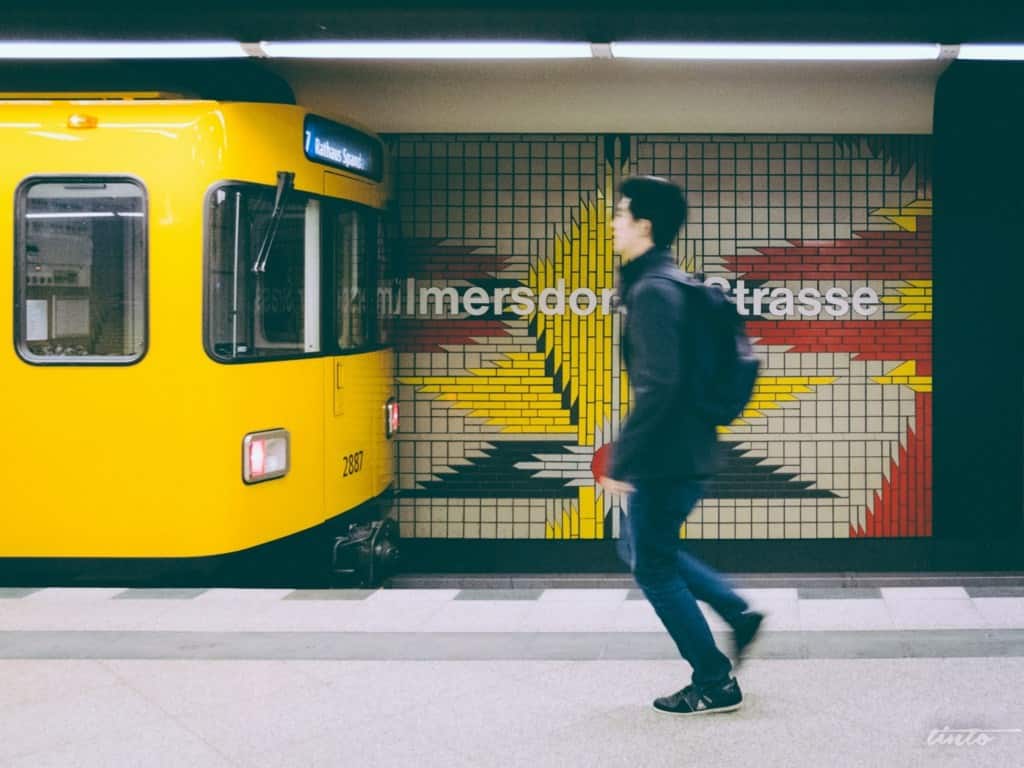
Gay Hotels in Berlin
Luxury
Pullman Berlin Schweizerhof – A modern, stylish stay in the heart of Berlin, near Tiergarten and KaDeWe. This luxury hotel features a safari-themed design, a spacious spa, and one of the largest hotel pools in the city. The hotel restaurant, XXenia, serves fish and chips – randomly – as well as a range of international cuisine.
Rocco Forte Hotel De Rome – This Rocco Forte Hotel, is a 46-room, five-star luxury hotel set in a former 19th-century bank building near Museum Island. It blends historic elegance with modern sophistication, featuring a stunning rooftop terrace, an Olympic-sized swimming pool, a high-tech gym and a lavish spa set in a former jewel vault.
Hotel Adlon Kempinkski – Arguably Berlin’s most iconic luxury hotel, Hotel Adlon Kempinski is located next to the Brandenburg Gate. Renowned for its historic elegance, world-class service, and celebrity guests, it features opulent rooms, Michelin-star dining, and a lavish spa. A symbol of sophistication, it offers an unparalleled blend of tradition and modern luxury.
Mid-Range
ArtHotel Connection – A gay hotel with 16 rooms located in Berlin-Schöneberg’s gay district, conveniently situated next to Prinzknecht bar and Connection Club. The décor is quirky and adorned with modern art, giving it a cozy bed-and-breakfast vibe. The breakfast buffet, thoughtfully available until late, caters to inevitable Berlin hangovers. The rooms are spacious and bright, with charming, homey touches like comfortable armchairs and modern art. Guests tend to be friendly and sociable, making it easy to meet potential party companions.
Axel Hotel Berlin – This world-famous gay hotel chain’s original Berlin location features a rooftop terrace, a popular restaurant, and a bar on the ground floor. Located near the Schöneberg gay neighborhood, it’s known for its “straight-friendly” atmosphere. The building stands out with a bold overlay of gold on black and its rooms exude glamor.
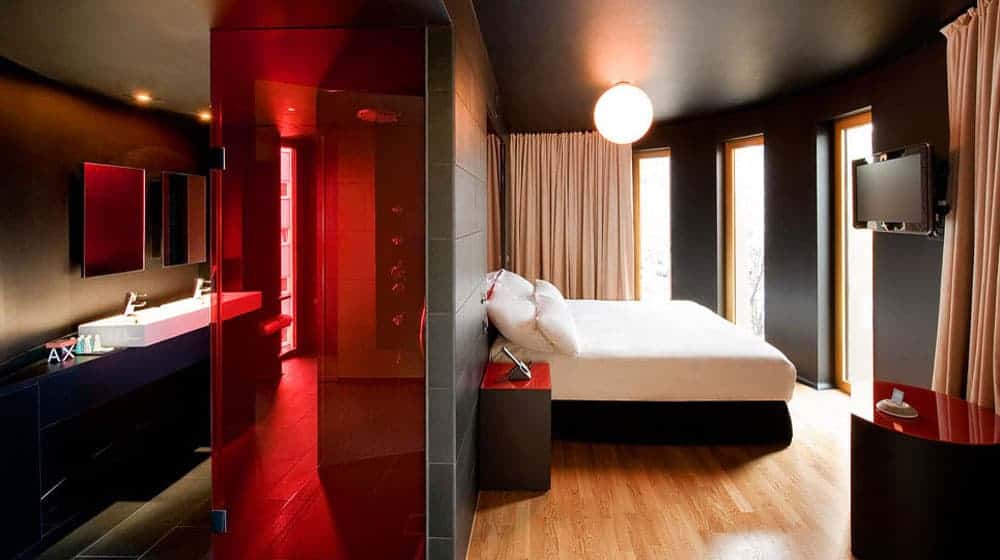
Michelberger Hotel – This independent boutique hotel is fundamentally Berlinese, embodying its artsy, community-driven, bohemian spirit. It features uniquely designed rooms, a lively courtyard, and an organic, locally sourced restaurant. Located in Berlin’s Friedrichshain district, it offers easy access to the city’s vibrant nightlife—just a short stroll (or stagger) away.
Hüttenpalast – Is there anything more Berlin than staying in retro-style caravans and huts while still being in the city center? This one-of-a-kind boutique hotel in Berlin’s Neukölln district blends indoor camping with industrial-chic design. Guests can stay in beautifully restored vintage caravans or cozy wooden cabins, all set within a spacious, light-filled former factory. This unique concept creates a playful, communal atmosphere while maintaining modern comforts like shared lounges and lush courtyard gardens.
Mercure Hotel – A longtime favorite among gay travelers, this hotel is located in the heart of the Schöneberg neighborhood. It offers the perfect blend of modern comfort and local character—with rooms featuring quirky scientific themes. Plus, plenty of nightlife, restaurants, and gay shops are just a short walk away.
Casa Camper – This stylish, design-focused boutique hotel features 51 suites and rooms in the vibrant Mitte district is known for cutting-edge art galleries, restaurants, shops, and a variety of bars. Known for its minimalist aesthetic and relaxed atmosphere, it offers a top-floor lounge with panoramic city views, 24/7 complimentary snacks, and a focus on sustainability.
Budget
Guesthouse 21 – A small, quaint, and gay-friendly guesthouse in Berlin-Schöneberg, Guesthouse 21 exudes charm. The hosts are lovely, as is the vintage-inspired decor. Housed in a historic building, it offers spacious rooms with classic furnishings, a communal kitchen, and a relaxed, home-like vibe.
Motel One – A design hotel chain perfect for budget travelers—modern, clean, and a great value for the money. Located close to Schöneberg’s gay area, it showcases German efficiency at its best, with sleek design, cozy rooms, and high-quality amenities.
We’ve partnered with misterb&b to help curate the most LGBT+ friendly homestays. misterb&b is not a hotel or chain, but rather a booking platform for rooms, apartments and homes and it allows you to book from gay and gay-friendly hosts around the world. They have hosts in more than 200 countries and territories with more than 1 million total listings. Understanding the gay scene is much more easily done with the help of a local and home-sharing is one of the best ways to meet someone living in the city who knows how things work, where and when are the best nights to go out, and what places to eat at and which to avoid. misterb&b is our top choice if your priority is exploring the local gay scene.
Special Offer! Sign up with misterb&b and you will receive a free $10 credit to use on your first booking!Sightseeing & Activities in Berlin
Brandenburg Gate – During WWII, Allied bombing damaged but thankfully did not completely destroy the Brandenburg Gate. Located at the western end of Unter den Linden, the gate is one of Berlin’s most iconic landmarks, symbolizing both Germany's turbulent history and its reunification. Built in the late 18th century, this neoclassical monument once stood as a division between East and West Berlin during the Cold War. Today, it represents unity and peace.
Berlin Wall Memorial – A poignant site that commemorates the division of Berlin during the Cold War and honors those who lost their lives trying to cross the barrier. Located along Bernauer Strasse, it features a preserved section of the original wall, watchtowers, and a “death strip.” The memorial includes an outdoor exhibition with graffiti artwork depicting the history, a visitor center, and a chapel of reconciliation. Visitors can take a stroll along the wall or join a Trabi tour to explore the site. Book tour →
East Side Gallery – This open-air art gallery stretches along a preserved section of the Berlin Wall for over 1.3 kilometers. It's the longest remaining part of the wall and features more than 100 murals painted by artists from around the world. The artwork, created in 1990 after the fall of the Berlin Wall, symbolizes freedom, unity, and hope for the future. Famous pieces like the “Fraternal Kiss” have become iconic representations of the Cold War era.
Reichstag Building –Situated just north of the Brandenburg Gate, this building houses the German Parliament. Originally completed in 1894, it was heavily damaged during WWII and later restored with a striking glass dome, where you can see right down into parliament to symbolize the transparency of the government. Visitors can tour the dome for panoramic views of Berlin’s skyline, and it is a superb place to watch the sunset from, when the city is bathed in golden light. Book tour →
The Holocaust Memorial – Memorial to the Murdered Jews of Europe. Designed by architect Peter Eisenman, it consists of 2,711 concrete slabs of varying heights, arranged in a grid pattern across a 4.7-acre site. The abstract design allows visitors to walk through the maze-like structure, evoking a sense of confusion and isolation, symbolizing the disorientation and suffering of the Holocaust victims. An underground information center provides further historical context. While still a tasteful memorial, this is a somber reminder of the horrors of the past regime in Berlin.
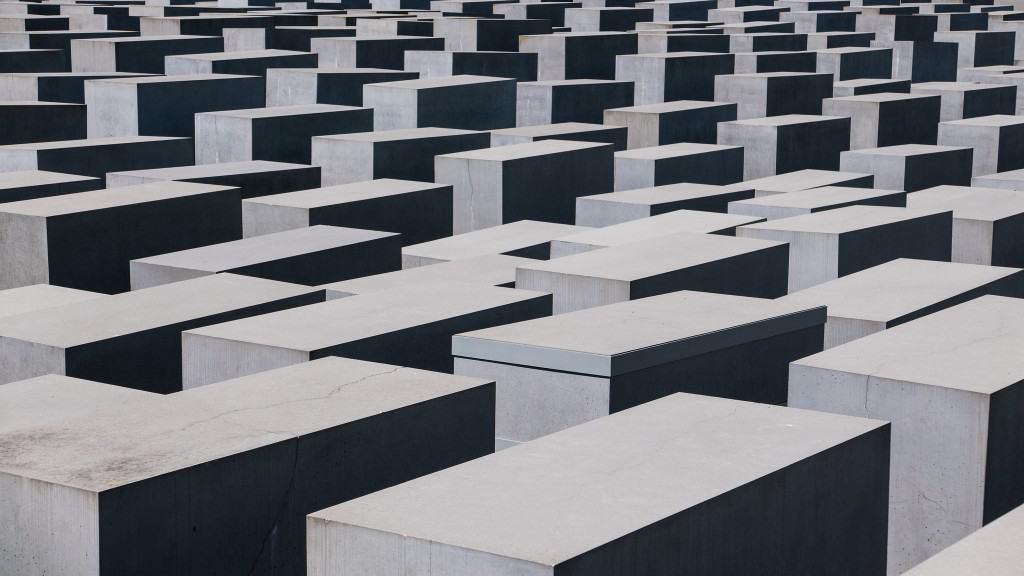
Tiergarten – Only minutes from transportation to all of Berlin, this vast and lush park stretches through central Berlin and offers a relaxing contrast to the city's hustle and bustle. This is also where you will find the Memorial to Homosexuals Persecuted Under Nazism, a concrete cube with a screen inside that plays a film depicting men kissing.
Schwules Museum – One of the world’s first museums dedicated to LGBTQ+ history and culture, the Schwules Museum is located in the Tiergarten district and offers a vast collection of exhibits, documents, and art that explore the diverse experiences of LGBTQ+ communities both in Germany and internationally. The museum regularly hosts rotating exhibitions, covering topics such as queer art, activism, and historical milestones, alongside a permanent exhibition on Berlin’s LGBTQ+ history.
Museum Island – Situated on the Spree River, the island is home to Berlin's Cathedral and its five world-renowned museums: the Pergamon Museum, Bode Museum, Neues Museum, Altes Museum, and the Alte Nationalgalerie. The Pergamon Museum is famous for its monumental reconstructions, including the Pergamon Altar and the Ishtar Gate. The Neues Museum houses Egyptian artifacts, including the iconic bust of Nefertiti. The Altes Museum focuses on ancient Greek and Roman art, while the Bode Museum showcases Byzantine art and sculpture. The Alte Nationalgalerie features 19th-century European art. Book tour →
Jewish Museum – One of the largest and most significant Jewish museums in Europe. Opened in 2001, it is renowned for its striking architectural design, which symbolically reflects the history and experiences of Jews in Germany. The museum is divided into three interconnected structures: the main building, the Garden of Exile, and the Holocaust Tower. The permanent exhibition spans two millennia of Jewish history, culture, and contributions to German society, covering everything from medieval Jewish life to the horrors of the Holocaust. One of the museum's most moving elements is the “Fallen Leaves in the Memory Void,” where visitors walk across iron faces on the floor creating echoes in the empty, jagged space symbolizing loss and absence. Book tour →
River Spree Cruise – It's a little known fact that Berlin has more waterways than Amsterdam. Taking a cruise along the River Spree and around the city's canals is a perfect way to do a bit of sightseeing by boat. Book tour →
Berlin TV Tower – You can see this tower from anywhere in Berlin as it's the tallest structure in Germany, standing at 1,207 feet (368 meters). Located in the central district of Mitte near Alexanderplatz, it was constructed between 1965 and 1969 by the government of East Germany as a symbol of socialist power and progress. Visitors can take an elevator up to the observation deck, which is 666 feet (203 meters) high, providing stunning 360-degree views of Berlin. Above the observation deck is a rather impressive revolving restaurant, Sphere, where diners can enjoy a meal while slowly rotating around the city. Book tour →
Charlottenburg Palace – Located in the Charlottenburg district of Berlin just outside the center, this is the largest palace in the city and a sterling example of Baroque and Rococo architecture. Built in the late 17th century as a summer residence for Queen Sophie Charlotte, it features beautifully decorated rooms, grand halls, Versailles-inspired gardens, and an impressive collection of art, porcelain, and antiques. Book tour →
Berlin Gay Tours
Queer Berlin Walking Tour – Explore Berlin’s gay and lesbian history on a unique Queer Berlin tour of its gay neighborhoods and locations. See the poignant Holocaust Memorial, visit one of the city’s oldest gay and transvestite bars, and end at the Schwules Museum.Book tour →
Gay Berlin Tour: Out in Schöneberg – Experience an exciting tour exploring the historical traces of Berlin's oldest gay neighborhood, the rainbow quarter of north Schöneberg, between Dennewitzstraße and Nollendorfplatz. Learn about how the district became what it is today and its evolution and what the future holds Book tour →
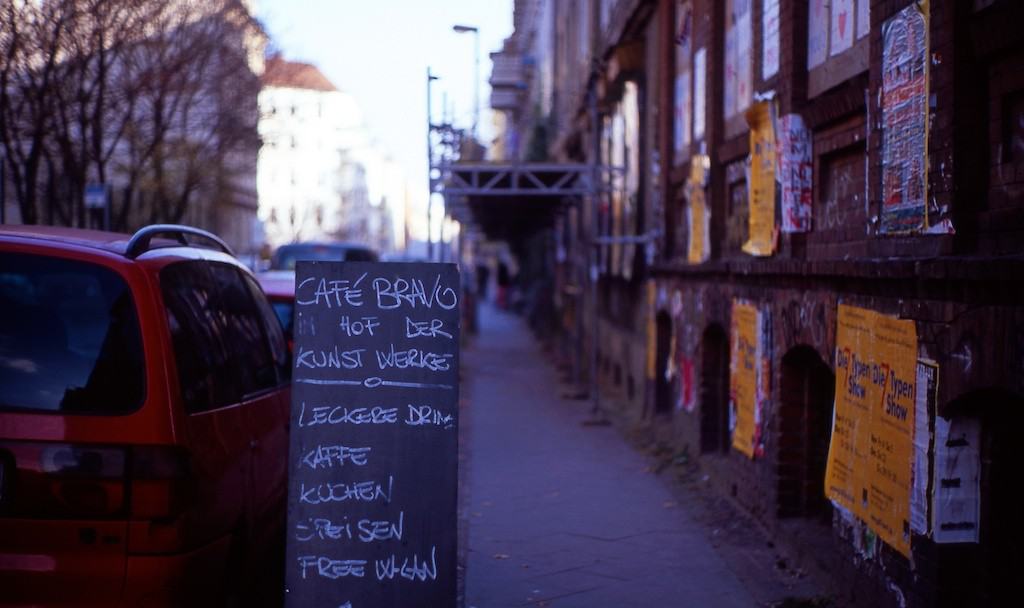
Restaurants and Cafes
Curry 36 – A playful, friendly staff serving up the best currywurst ever! Enjoy a cold beer and a side of fries with mayo and ketchup out on the patio.
Schwarzes Café – A laid-back, all-day café and bar with a courtyard terrace, picture-covered walls, an extensive drink menu, and eclectic food. It serves pastries, sandwiches, breakfast, and main course dinners.
Hasir – The place to go for great, authentic Turkish food. The quality of the chicken and lamb is excellent and cooked to perfection. The vegetarian starters are also superb.
Markthalle Neun (Kreuzberg market hall) – Make sure to try ‘Street Food Thursday' for Korean buns, American BBQ, Nigerian fufu, Peruvian ceviche, Allgäu Kässpatzen, Mexican tacos, Thai tapioca dumplings, and British pies.
Sissi – Kitchen open daily from 12:00 p.m. to 10:00 p.m.; Friday and Saturday until 11:00 p.m. A nice but small Austrian restaurant in Berlin-Schöneberg.
Café Berio – Popular in summer, this café in Berlin-Schöneberg has a busy street terrace and a mixed clientele.
Mustafa’s – Excellent budget dining. It can get crazy busy, but for the best kebabs in town, it's well worth the wait. The fresh bread and veggies are noteworthy as well.
Jungbluth – A stylish yet old-school-looking restaurant with creatively crafted German meat, vegetable, and seafood dishes. They also offer three “surprise” menus, but what isn’t surprising is that every course meets the high standards you'd expect from a Michelin-starred restaurant.
Restaurant Bass – Located in Western Berlin, this cozy, living room-like restaurant serves modern Northern and Southern German food, like Kartoffelsalat (potato salad) and Schnitzel. All food is cooked with local ingredients, and there’s even a cute terrace.
Restaurant im Zollpackhof – One of the best restaurants in Berlin to enjoy a Bavarian beer with German-Austrian cuisine. It is spacious, making it ideal for large groups. There are several terraces to enjoy if the Berlin weather is favorable, but the interior is also atmospherically rustic, complete with wooden beams and a 360-degree fireplace.
Pots – Part of a hotel in central Berlin, this high-end restaurant serves gourmet German food with a modern twist. It also has an extensive wine menu in its favor.
Berlin Gay Bars and Clubs
Berlin's reputation for having some of the best clubs is well-deserved, and it boasts a huge LGBTQ+ nightlife scene. Seriously, there’s always a club night happening any night of the week. Here are just a few of the literal hundreds of options available.
Hafen – This popular, stylish Berlin gay bar has an artistic twist. When the weather is fine, guys enjoy a beer outside on the pavement. Hafen hosts Quizz-O-Rama, a unique quiz show, on Mondays.
Roses – With a completely pink interior, this bar is jam-packed on weekends. If pink is your color, visit this small, cozy, and campy gay bar.
Zum Schmutzigen Hobby – Berlin's most famous drag performer, Nina Queer, hosts this flashy bar in Berlin-Friedrichshain. It has a cozy living-room atmosphere and very friendly people. Easy-going and casual, the main crowd is in their 30s.
GMF – Open Sunday from 11 p.m., it's one of the best gay clubs in Berlin with a friendly, pleasantly diverse crowd. Everyone from older muscle guys to trendy young queens mixes it up to House/Electro and Pop/R'n'B.
Schwuz – For over 30 years, Schwuz has been the place for lesbians, music festivals, queer films, sex parties, discussions, readings, and drag shows. It's the biggest queer club in Berlin, located in a former brewery, now offering Saturday and Friday night parties with various music styles.
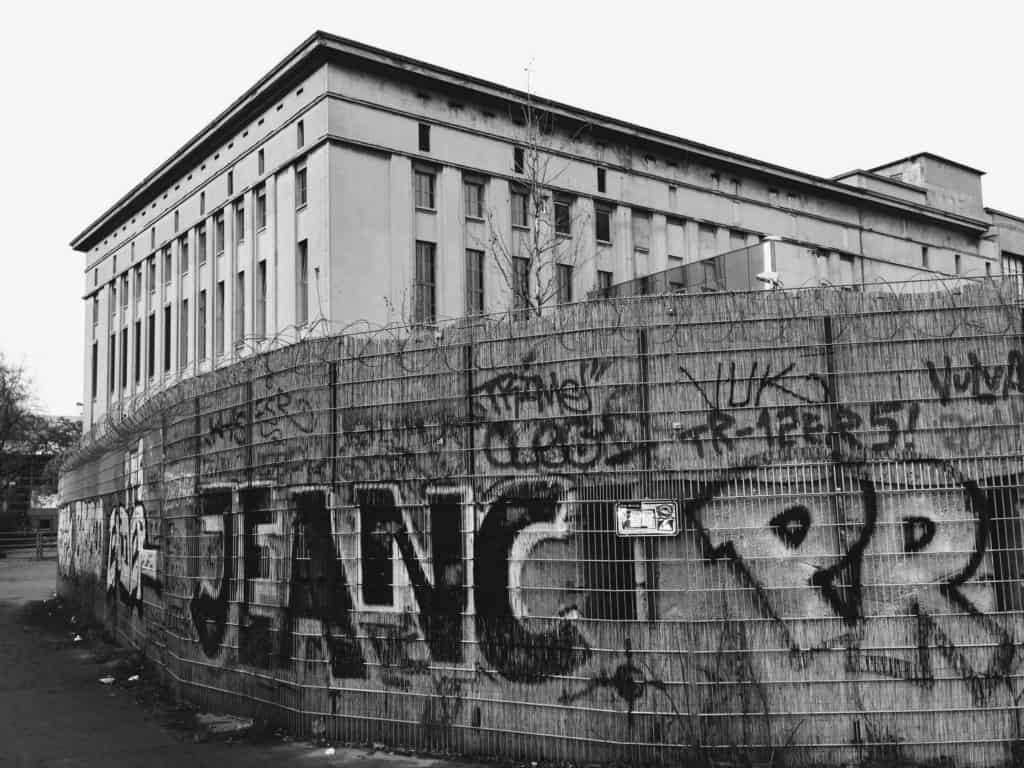
Berghain/Panorama – Can any Berlin guide not mention this legendary venue? Here, you'll find the best DJs playing electronic music and live acts in a nightclub that was once a warehouse, located not far from where the Berlin Wall stood. It's infamously difficult to get into, with bouncers turning away around 50% of people with no explanation given. Our advice: go on a Sunday, wear black or fetish gear, avoid talking in line, know who the line-up for the night, and appear nonchalant about getting in. Even with these tips, you may still be turned away, so make a backup plan. Should you be lucky enough to enter, Berghain offers a truly unique experience where unexpected adventures await. The cathedral like main hall plays heavy industrial techno whereas the upstairs Panorama Bar features a more relaxed vibe – at least comparatively – with sunlight filtering in atmospherically during the day. There are plenty of places for some naughty fun, and the hidden ice cream bar upstairs is a great spot to take breaks between dancing sessions.
KitKatClub – This popular Berlin nightclub, opened in March 1994 by Austrian pornographic filmmaker Simon Thaur and his partner Kirsten Krüger, is known for its fetish parties, techno, and trance music. The fetish nights are mixed and open to everyone, but be sure to dress the part to avoid being turned away. The space has three floors, featuring a variety of unique and unusual sights—and possibly experiences—with an outdoor area and even a pool.
Berlin Gay Sauna's & Cruising Bars
Berlin is the no mercy daddy of sex and fetish, with far too many venues to mention them all. That said here are a few firm favorites:
Der Boiler – One of the most popular gay saunas in Berlin, located in Kreuzberg. You’ll find a combination of traditional spa amenities as well as plenty of darkroom adventures. There’s a nice bar on-site with drinks and snacks. It has very clean facilities, and you'll find a wide range of nice-looking guys of different ages. It’s worth the €20 entrance price and is open every day of the year.
LAB.ORATORY – Filth incarnate, there’s no beating around the bush with this one. LAB is another legendary venue found in the basements below Berghain, where anything goes when it comes to kink. High on the list of the best fetish venues in the world, it has everything you can imagine and more. Not recommended for those who are easily shocked, and be sure to check the theme nights to avoid any unwanted surprises.
Sheune – This small bar is often full, especially on weekends, and is located in the Schöneberg district. Scheune has a loyal following, with the same locals often attending, giving it a friendly atmosphere. The “barn bar” hosts special fetish-themed nights, ranging from rubber to uniforms, and Sundays get a little hardcore with the Naked Party.
Connection Club – Prepare to enter the Twilight Zone… for real, that’s the name of the cruising area found in the basement here! Connection Club is ostensibly a techno/house dance club with cruising areas, but the cruising element tends to take over around midnight on all the floors.
Bull – A great combination of hangout bar and fetish club, complete with a well-equipped darkroom featuring swings and plenty of glory holes. Bull is popular with the older crowd and is the best place to be—or find—a leather-clad daddy. That said, all kinky types are welcome, from puppies to those who just want to be naked.
Gay Events in Berlin
Berlin CSD (gay pride) – Also called Christopher Street Day, Berlin's Pride takes place in July. The massive parade begins at 12:30 p.m., starting from Kurfürstendamm and passing through Nollendorfplatz and Siegessäule, ending at the world-famous Brandenburg Gate, where the closing ceremony runs from 4:30 p.m. until midnight. Beyond the parade, there are numerous parties, cultural events, and discussions across the city, catering to all aspects of LGBTQ+ life. Dates: 2026 to be announced. Mid-July.
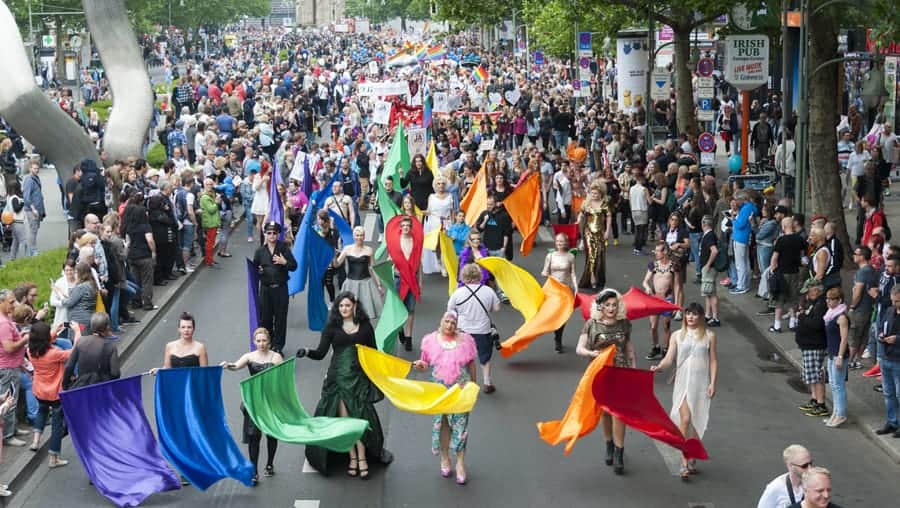
Stadtfest – The perfect warm-up to Berlin's Pride. Days before Berlin's official pride celebrations, the Stadtfest takes place around Nollendorfplatz in the Schöneberg district. The festival features a lively mix of music stages, food stalls, bars, and informational booths representing LGBTQ+ organizations. Dates:18 – 19 July, 2026.
Folsom Europe – Europe's largest gay fetish event take place in mid-September and is a weekend celebrating the kink community in all its glory. Expect raunchy parties from Friday until Sunday, culminating in a Saturday afternoon international fetish and leather street fair. Dates: 2026 dates to be announced.
Hustlaball – Features a VIP room with hardcore performances on two stages by a variety of famous sex stars. The performances cover several genres, including Roman Gladiator, rubber, leather, and more. Dates: 26 -18 October, 2025.
Day Trips from Berlin
Potsdam – Take the S-Bahn S7 line from Berlin Hauptbahnhof. Cost: €7.40 for an ABC day ticket. (RE1 is also an option.) If you rent a bike to tour the unforgettable gardens, keep in mind that some areas are accessible only by walking. Consider yourself a photographer? You won’t find a backdrop like this anywhere else Book tour →
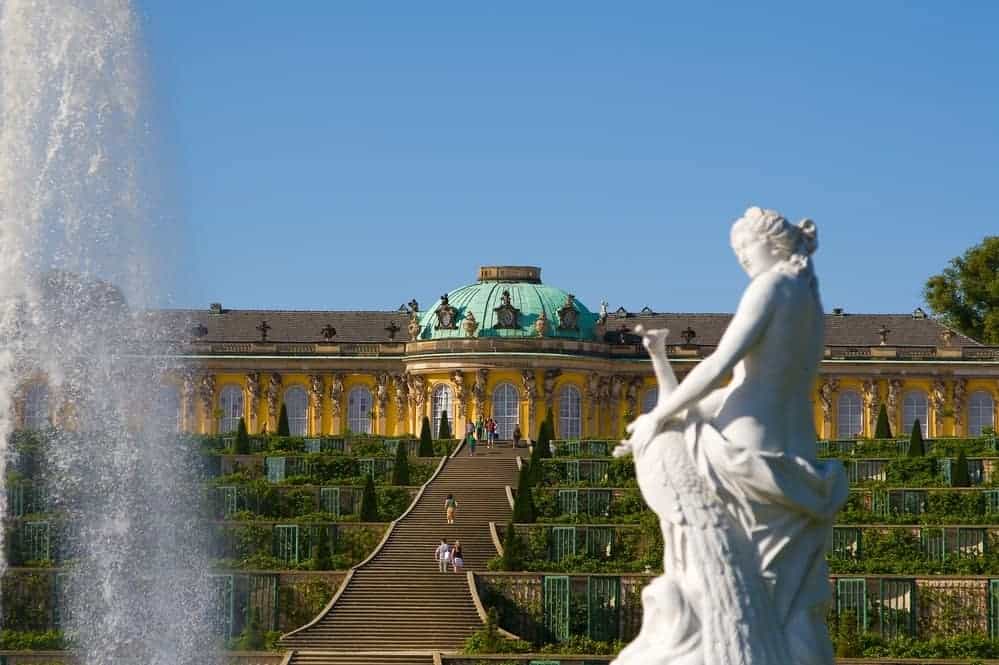
Sachsenhausen Concentration Camp – Enlightening but somber, this memorial serves as an extensive and powerful history lesson. It offers a real picture of mankind's inhumanity toward others. You'll learn more spending one day at this thoughtfully designed memorial than in all your history lessons combined. Find the best route/transportation by clicking here. Book tour →
Dresden – The Dresden railway is an electrified, double-track, main-line railway running through the German states of Saxony, Brandenburg, and Berlin, originally built and operated by the Berlin-Dresden Railway Company. You may need more than one day to shop, eat, drink, and sightsee your way through this historic haven! Plan on at least two days. You can travel from Berlin by train (costs between $40 and $80, depending on the type of train). We recommend the EC train, as it is cheaper than the ICE and goes directly to Dresden in about two hours. You can also travel by car (about a two-hour drive) or by bus (2.5 hours for only $12). Book tour →
Note: Some of these links are affiliates which means using them won’t cost you any extra but we do receive a small commission for each referral. You’re not obligated to use them but we appreciate it if you do. Thanks in advance for supporting this site if you choose to use our link!
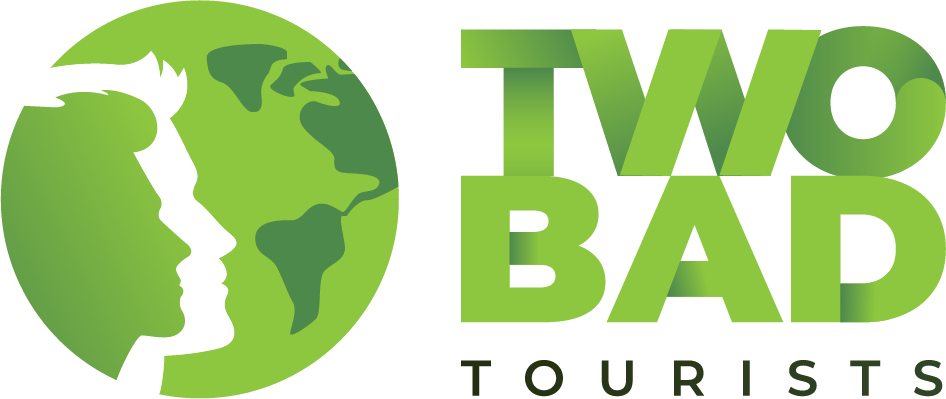

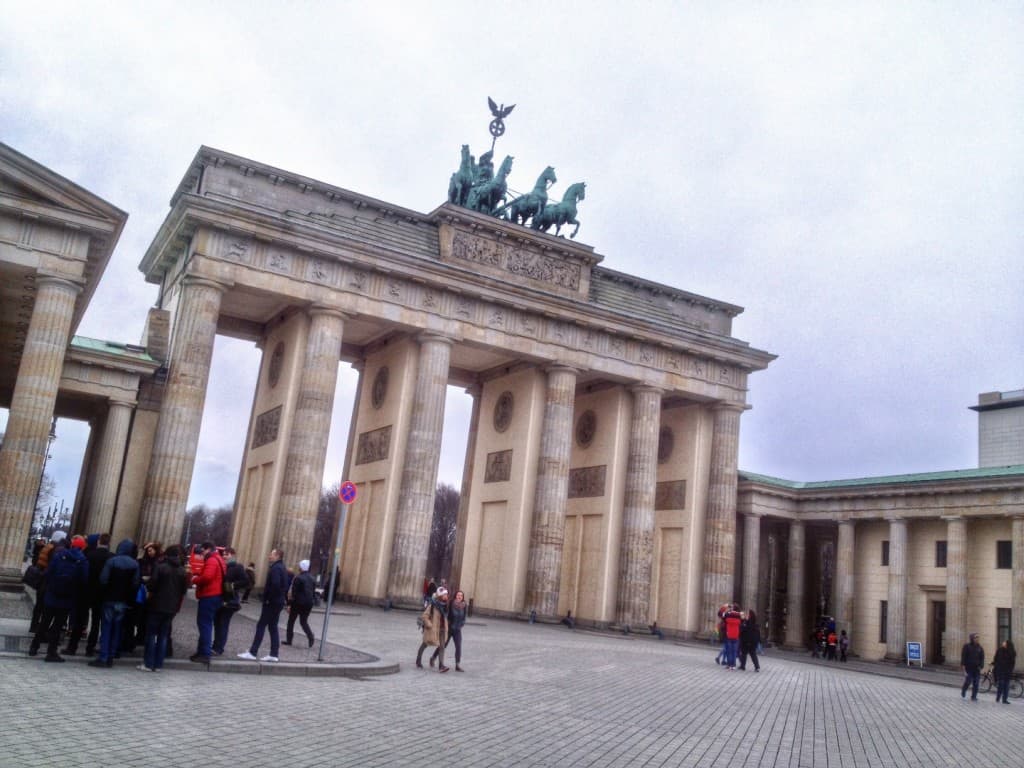

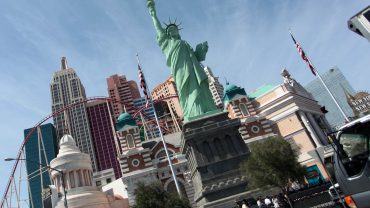

Comment (0)